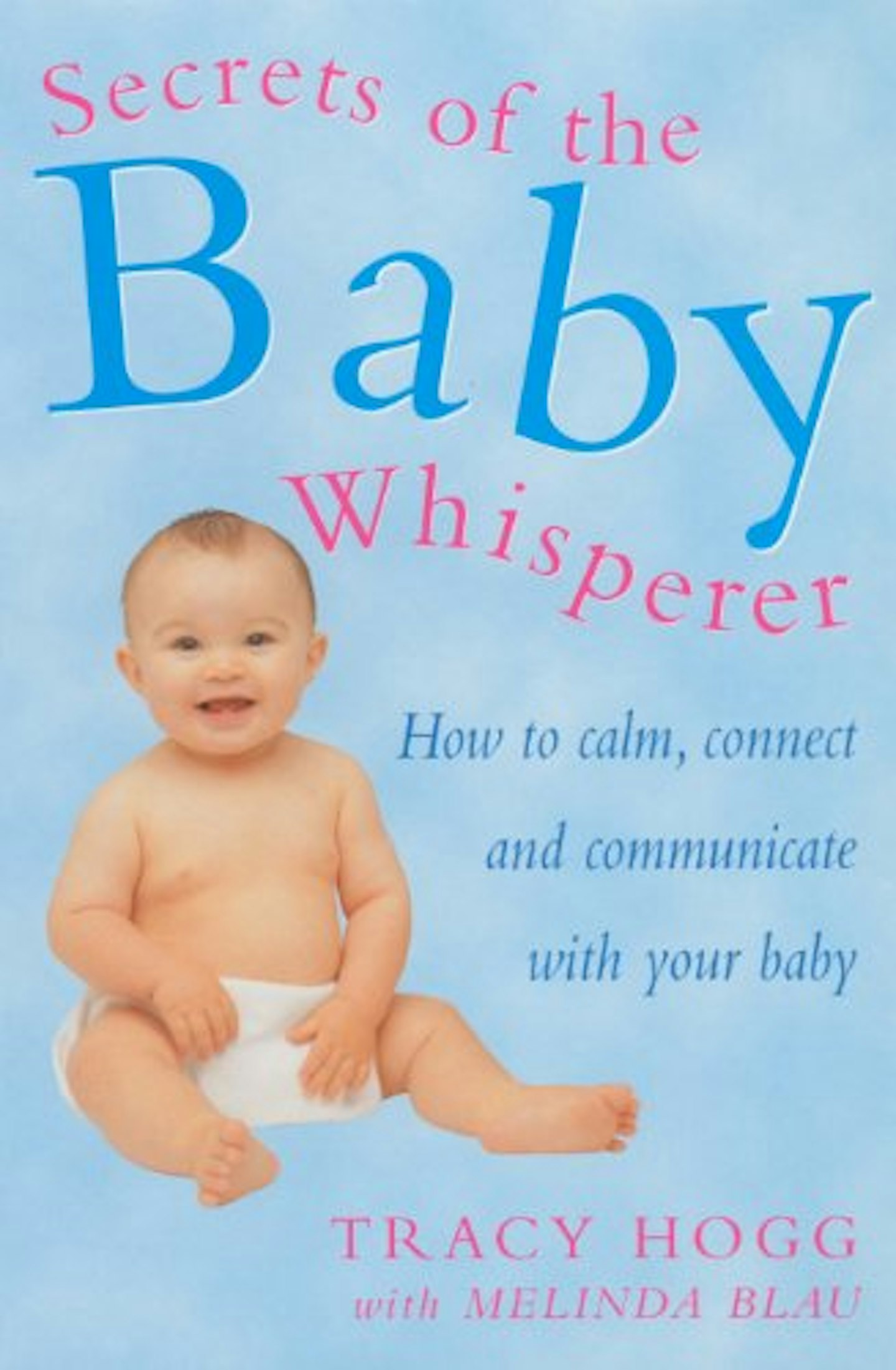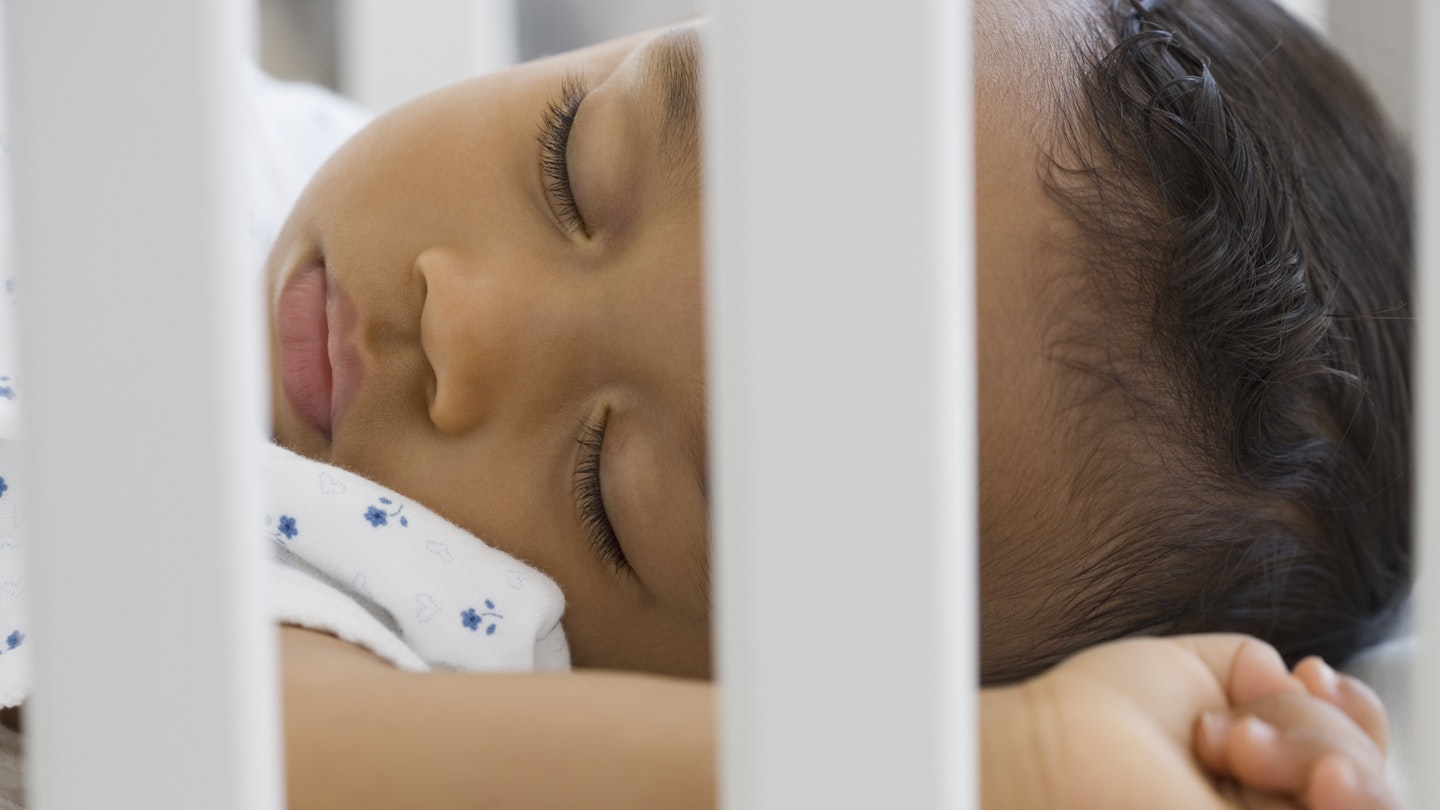There are so many different baby sleep training methods, sometimes it can be hard to work out which one would work best for you and your baby. If you’re thinking about sleep training your baby, you might want to consider the pick up, put down method.
We spoke to Sleep Consultant and mum of four,Lucy Wolfe. She also wrote The Baby Sleep Solution and All About The Baby Sleep Solution and created “Sleep Through”, a natural bed and body sleep spray and relaxing rub.
What is the pick up put down method?
This method was first introduced by Tracy Hogg in her book, Secrets of the Baby Whisperer, and the method is pretty much exactly what it says on the tin. It involves putting your baby to bed in their cot as normal. When they start to make a fuss, go back in, pick your baby up for a cuddle until they calm down, then put them back in their cot and leave the room. Repeat again and again until your baby is settled.
This is a great method if you can’t bear to hear your baby cry on their own without going to check on them.
-
Pick up - If your baby begins to cry, stop a second to listen. If it sounds like they are just fussing a little and you think they’ll soon calm down, wait. If their crying sounds louder and uncontrollable, that’s the time to go and comfort them.
-
Put down - Once they’ve calmed down and stopped crying, lay them down again when they're drowsy but awake and wait for them to fall back to sleep.
'Pick Up Put Down is often used by parent when helping their child to increase their sleep ability which in turn may help them sleep better in the overnight period, although the approach itself may also need to be implemented through the night also and for day time sleep in order to unlock the skill set required for better sleep.' Says Lucy.
'Whilst parents often report that this is an effective method, as a practitioner, I would not typically encourage this particular approach, but at the same time, do support parents that have become informed and feel that this is a reasonable route for them.'
How old should my baby be for pick up put down?
Sleep training can start when babies begin to sleep through the night without needing a feed which is usually around the 4-6 month mark. If you’re not sure, it’s always best to speak to your midwife or your baby’s GP to check when you can start sleep training.
Lucy says: 'I encourage gentle sleep shaping from birth to 6 months of age - this involves building the loving trust bond, attunement to sleep cues, a percentage of wakefulness approach together with early bedtime routines.'
Does the pick up put down method work?
This sleep method can be a rather tiring one for parents and it can become frustrating. It can take a long time for your baby to settle at first, and even longer for them to learn to comfort themselves and understand when it’s time to sleep.
But with some patience, consistency and help from your partner or family, you’ll get there eventually and they'll learn to fall asleep without your help.
Lucy says: 'Many parents report success with this method and within that then it deserves consideration. I always want parents to make changes and adjustments and use approaches that resonate for them. However, I do find that it may be over-stimulating and confusing for the child. It is suggested that you PU when crying and PD when calm- this could lead to mixed messages and ultimately teach your child to cry, when ultimately we are aiming for your child not to cry and for them to feel supported and accompanied as they learn.'
'It may also be harder for a child who has routinely been held in arms or fed to sleep, as each time they get picked up, they may feel that they original expectation will be re-introduced - but then it won’t be as they get put down immediately again and this can lead to unnecessary upset and a cycle of frustration for both parent and child. A less confusing and stimulating approach might be to support in a more physical way - of stroking and rubbing them, whilst in the cot, verbally reassuring and being emotionally available and using distraction techniques to help moderate their upset and limiting picking up for intense crying, but always supporting your baby.'
Top tips for success
-
Implement a good bedtime routine - when the time comes for putting them to bed, and you’ve done all the important steps, lay them in their cot (they should be drowsy at this point) and don’t leave the room until they are asleep.
-
Make sure you’ve had some sleep - we know it can be hard to keep your energy levels up as a mum, especially in the middle of the night, but try where you can to make sure you’re well rested before starting this method of sleep training - especially in the first few weeks.
-
Get help - it’s very tough to do this on your own without the help and support of your family so it’s a good idea to take it in turns with your partner or even with baby’s grandparents or aunts and uncles to make sure you get the rest you need.
Other methods of sleep training
If you’re not sure the pick up put down method is for you but you still want to have a go at sleep training, there are other techniques you can try. From the Ferber methodto cry it out, chair method and controlled crying, there are a number of other sleep training methods that parents can try to help their little one get into a good sleeping pattern and we’ve outlined them all here.
According to Lucy, 'In general, encouraging better sleep is so much more than a specific approach and whilst some are of course better and more suitable than others, laying a fertile ground for the implementation of a sleep learning exercise is much more significant, laying the groundwork for the approach that you select to be effective.'
'My primary style would be my own stay and support approach that does support picking up but does not over-stimulate the child as PUPD may do. I will also encourage parents to stay with their children when they are learning, so on that basis PUPD does allow for that, although I do find that it may have limitations.' Lucy says.
Lucy Wolfe's top tips for parents
-
Become as informed as you can be - then begin to lay a solid foundation - discover your child’s language for sleep - and attempt naps by day before they become overtired.
-
Make clear decisions, about where you want your baby to sleep - establish a calm and connected bedtime routine, avoid overtiredness at bedtime specifically and understand that very often bedtime benefits from being earlier especially as you help a child to learn a new skill of sleep.
-
Definitely don’t think of it as training - think of the process as a learning opportunity, to help your child’s sleep ability to emerge with your conscious and mindful support as their ability starts to emerge. Be predictable, loving, attuned and responsive.
-
Be patient - it takes time and each child will respond differently and improve at their own individual pace.

Find out more about the pick up put down sleep training method in this expert book.
